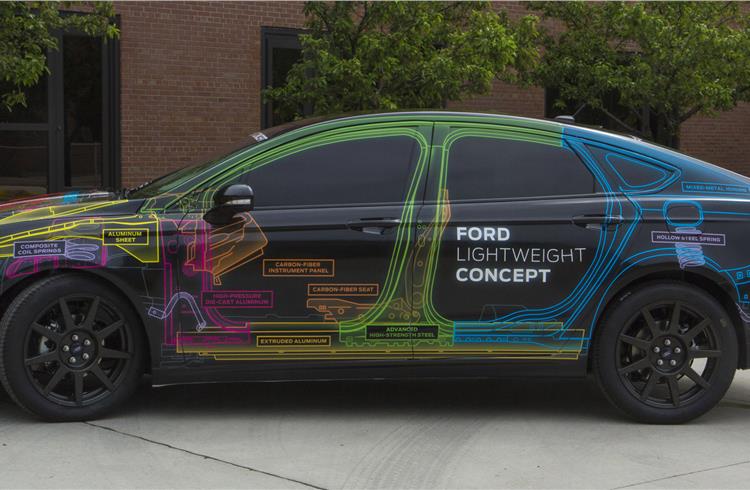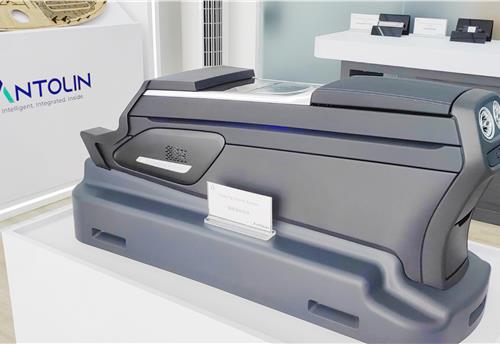Ford accelerates carbon fibre research to drive innovation in manufacturing technology
Ford and DowAksa are accelerating joint research to develop high-volume manufacturing techniques for automotive-grade carbon fibre
Ford and DowAksa are accelerating joint research to develop high-volume manufacturing techniques for automotive-grade carbon fibre in a bid to make vehicles lighter for greater fuel efficiency, performance and capability.
The companies will be part of the newly formed Institute for Advanced Composites Manufacturing Innovation, created by the U.S. government. The institute is part of the larger National Network for Manufacturing Innovation supported by the U.S. Department of Energy.
“Our collaboration with DowAksa and participation in this organization significantly boosts what we are able to achieve,” said Ken Washington, Ford vice-president, Research and Advanced Engineering. “We have a true alliance of highly talented people working to take automotive materials to the next level.”
The mission of the institute and the goal of Ford’s collaboration with DowAksa – a 50/50 joint venture between The Dow Chemical Company and Aksa Akrilik Kimya Sanayii A.Ş. – is to overcome the high cost and limited availability of carbon fibre, while developing a viable, high-volume manufacturing process. Ford and Dow Chemical began working together in 2012 to develop low-cost, high-volume carbon fiber composites.
“This opportunity builds upon Ford’s current joint development agreement with Dow Chemical and accelerates our time line to introduce carbon fibre composites into high-volume applications,” said Jim deVries, Ford global manager, Materials and Manufacturing Research. “This collaboration helps us accelerate our efforts to create lighter automotive-grade composite materials that benefit customers by enabling improved fuel economy without sacrificing strength.”
Ford’s expertise in high-volume manufacturing, design and engineering complements DowAksa’s strength in producing materials that make up carbon composites to create parts much lighter than steel components but with no loss of strength.
“DowAksa’s technology and manufacturing expertise will help effectively overcome barriers to entry for the use of carbon fiber composites in high-volume automotive applications,” said Douglas Parks, DowAksa board member and a primary participant in the founding of the Institute for Advanced Composites Manufacturing Innovation. “The new institute provides a collaborative platform to accelerate our progress.”
Carbon fibre composites have been used in aircraft and racing cars for decades because they provide high strength with extremely low weight. It is possible to tailor strength properties to a specific component – making it as stiff or flexible as needed for a given application.
“Our goal is to develop a material that can greatly reduce vehicle weight in support of improved fuel economy for our customers,” said Patrick Blanchard, Ford supervisor, Composites Group. “The flexibility of the technology allows us to develop materials for all vehicle subsystems across the product line – resulting in a weight savings of more than 50 percent compared to steel.”
Creating lighter vehicles is a major part of Ford’s Blueprint for Sustainability to reduce fuel consumption and exhaust emissions. Current products that apply a lightweighting philosophy include the Fiesta – which uses high-strength, lightweight boron steel. The all-new 2015 Ford F-150 pickup truck uses high-strength, military-grade, aluminium alloy to help reduce overall weight by up to 700 pounds – returning an EPA-estimated 5 percent to 29 percent better fuel economy, depending on engine and driveline configuration on the combined cycle, along with best-in-class payload and tow ratings.
The Ford Lightweight Concept Fusion applied such lightweight materials as aluminium, high-strength steel, magnesium, composites and carbon fibre to nearly every vehicle system to reduce the car’s weight to that of a Fiesta – a near-25 percent cut. Learnings from this concept can springboard light-weighting technologies to a much larger scale of production.
RELATED ARTICLES
Antolin unveils sustainable tech solutions at Beijing Motor Show
In line with its China market roadmap, Antolin is showcasing its latest advances in lighting, HMI, electronics, and sust...
Visteon wins $1.4 billion in new business in Q1 2024, launches 26 new products
Digitisation of vehicle cockpit megatrend is a key growth driver for Visteon with over $400 million of displays wins; Vi...
BMW uses Catena-X ecosystem using real-world CO2 data to enhance quality
Working together with partners and suppliers, the company has modelled a complete data chain for the first time using re...





 By Autocar Pro News Desk
By Autocar Pro News Desk
 14 Jan 2015
14 Jan 2015
 2156 Views
2156 Views









